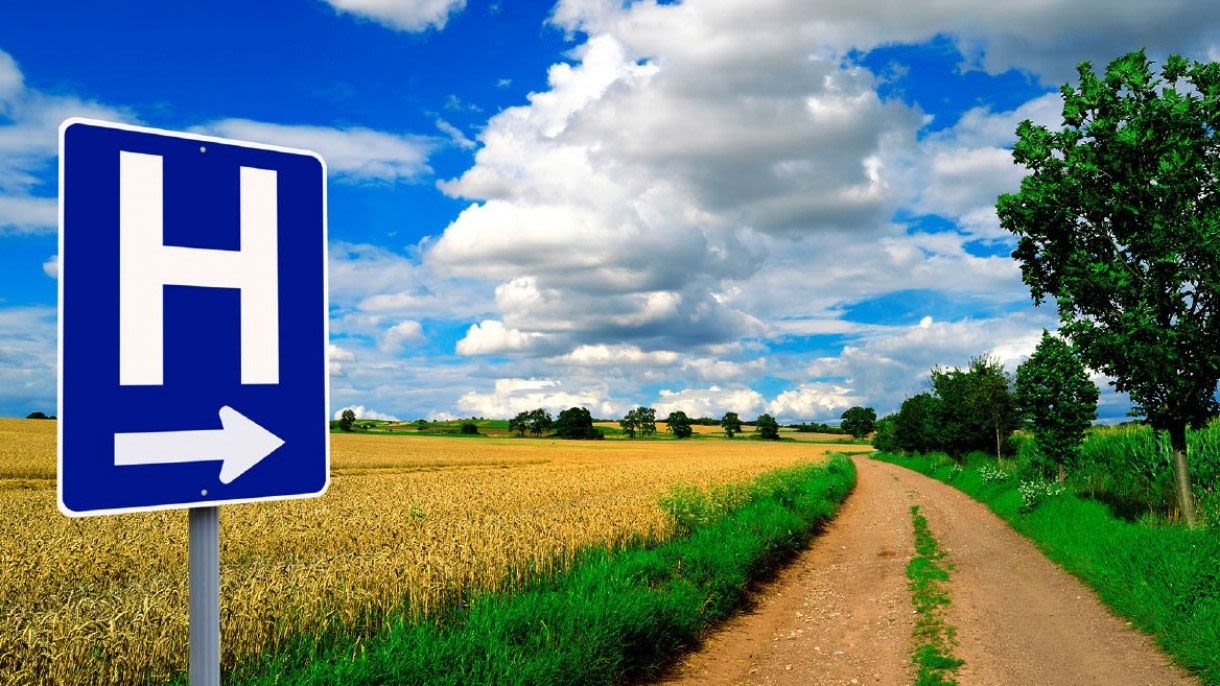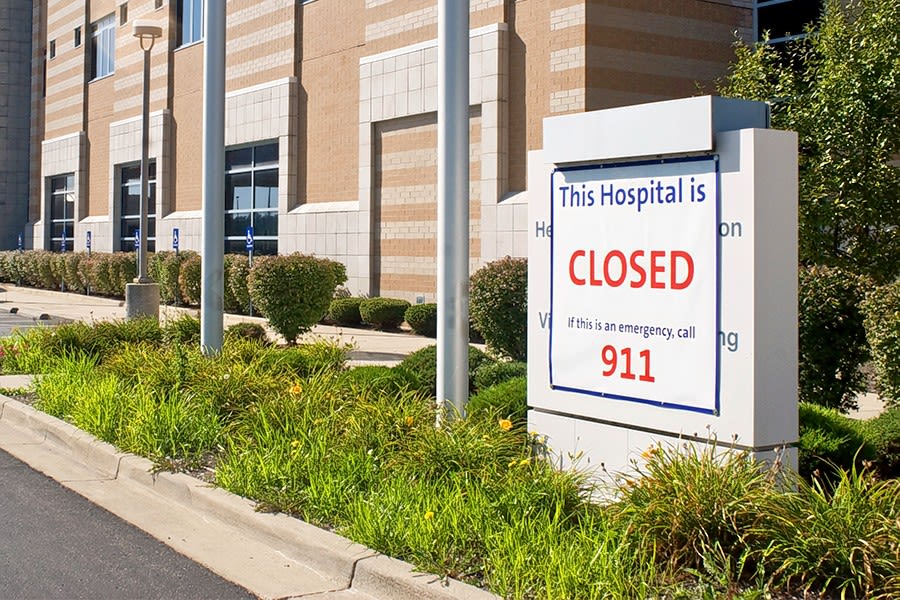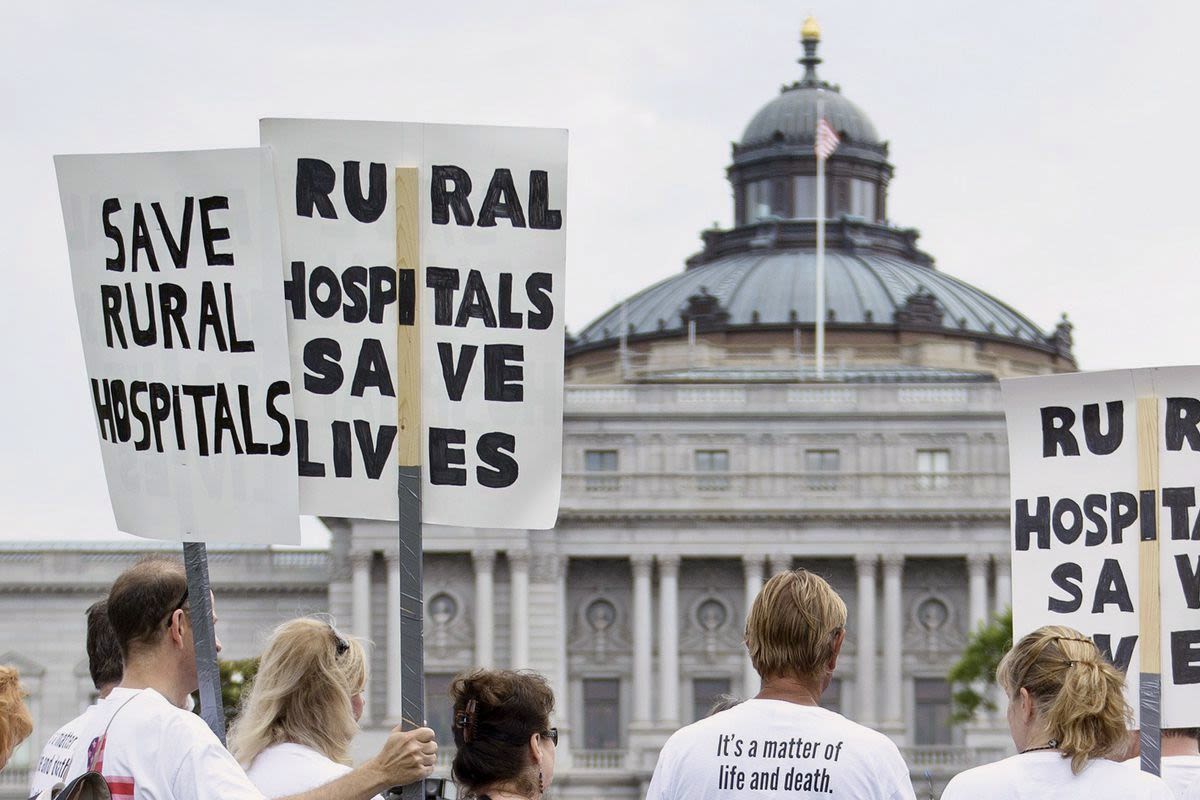Rural Hospitals on the
Verge of Closure
Need to Empower Rural Healthcare

Healthcare in the United States is provided through two primary avenues: Small Rural and Urban/Large Rural Hopsitals.
A "rural hospital is one located in an area classified as rural" by the Health Resources and Services Administration1. Small rural hospitals serve as crucial cornerstones, play a pivotal role in their respective communities by offering an array of essential healthcare services.
Nevertheless, a concerning trend has emerged in recent times: an increasing number of rural hospitals are on the brink of closure, primarily due to severe financial crisis. This predicament arises despite substantial healthcare spending in the country.
In this presentation, we delve deeper into the issue and aim to understand the causes and shed light on its wide-ranging impacts. Our goal is to propose actionable steps for the government, the public, and individuals to address this issue and ensure quality healthcare access for everyone, regardless of location.

The Struggle to Sustain
Adire situation looms over the nation's rural healthcare landscape. Almost 150 rural hospitals have been closed in the last decade. The CHPQR report states that "more than 30% of all small rural hospitals, over 600 facilities"1 are at the imminent risk of shutting down.
The closure rate has seen a modest decrease over the last two years, primarily due to the extra funding allocated during the pandemic. Nevertheless, as these funds gradually diminish, closures are once again on the horizon.
Grim Reality for Rural Communities
Primarily, states in the southern region face a noteworthy number of hospitals at immediate risk of closure. It's worth highlighting that these states often have a higher proportion of their population residing in rural areas with lower income levels. Typically, rural communities are characterized by their small, dispersed populations.
A substantial majority of these states have opted not to expand Medicaid. This decision implies that a significant portion of their populace may remain without insurance, which places added financial pressure on healthcare providers.

Escalating Financial Distress
Insufficient funding is a critical issue contributing to the financial distress faced by rural hospitals. Lower patient volumes, combined with a higher proportion of uninsured or underinsured patients, result in reduced reimbursements. This leaves them with a narrower margin for financial stability.
Most hospitals, regardless of size, operate at a loss with Medicaid and uninsured patients
While larger facilities can balance these losses with profits from private insurance patients. Small rural hospitals, however, lack this ability, causing them to face financial challenges.
Why does it matter ?
“If it weren’t for the good Lord and this hospital, I wouldn’t be here — clear as that”, said Ron Wise, a 78-year old man, New York Times, regarding the closure of "Cascade Medical Center", Idaho.


Impacts Caused

Photo by Yassine Khalfalli on Unsplash
Photo by Yassine Khalfalli on Unsplash
Delayed Access
Without a nearby medical facility, individuals must travel longer distances to receive care. This delay can be critical in emergencies, potentially exacerbating health conditions or leading to avoidable complications.
Beyond Emergency Care
Rural hospitals are not only providers of emergency services but also play a vital role in delivering comprehensive healthcare. Closure means the loss of primary care services, specialized clinics, and outpatient care. This impacts the management of chronic conditions, maternal healthcare, and other non-emergency medical needs

Photo by Museums Victoria on Unsplash
Photo by Museums Victoria on Unsplash
Economic Significance
The closure of rural hospitals has wide-reaching effects, extending well beyond the immediate community. Without a nearby hospital, individuals and families may be hesitant to put down roots in these rural areas. Additionally, this would have implications for other communities, as the operation of numerous energy stations and food production is reliant on these areas.
References
Facts & Data
1. World Bank. (May 25, 2022). Size of the urban and rural population of the United States from 1960 to 2020 (in millions) [Graph].In Statista. Retrieved September 25, 2023, from https://www.statista.com/statistics/985183/size-urban-rural-population-us/
2. Fast Facts on U.S. Hospitals, 2023 AHA.(.n.d.). American Hospital Association. 'https://www.aha.org/statistics/fast-facts-us-hospitals'
3.Rural Hospital closures - Sheps Center. (2023, September 1). Sheps Center. 'https://www.shepscenter.unc.edu/programs-projects/rural-health/rural-hospital-closures/'
4. Center for Healthcare Quality and Payment Reform. chqpr.org. https://chqpr.org/
5. Saving Rural Hospitals - Data on rural hospitals. (n.d.). 'https://ruralhospitals.chqpr.org/Data1.html'
6. Baumgaertner E, Hanson M. A Rural Hospital’s Excruciating Choice: $3.2 Million a Year or Inpatient Care? The New York Times. Published December 9, 2022. https://www.nytimes.com/2022/12/09/health/rural-hospital-closures.html
Images
7. Joyce LK, Specialist C, Health S of P. Quality of care at rural hospitals may not differ as much as reported, study suggests. Brown University. Published October 10, 2023. Accessed October 14, 2023. https://www.brown.edu/news/2020-08-10/cah

